15 years one-stop China custom CNC machining parts factory
 520 |
Published by VMT at Sep 02 2023
520 |
Published by VMT at Sep 02 2023
What Copper Alloy Grade?
Copper alloys are classified and identified by a system of numbers and letters. These designations provide information about the composition and properties of the copper alloy. Here are some common copper alloy designations:
C10000 - C79999: These designations are typically used for pure copper alloys with varying levels of oxygen content. For example, C10100 is nearly oxygen-free, while C11000 is oxygen-free.
C80000 - C99999: These designations represent various miscellaneous copper alloys that don't fit into other categories. For instance, C83600 is a cast copper alloy known as "Red Brass," often used in plumbing fittings.
Copper Nickel Alloys: These alloys typically start with C70XXX and C71XXX. Common examples include C70600 (90-10 copper-nickel) and C71500 (70-30 copper-nickel), which are used in marine applications.
Bronze Alloys: Bronze alloys are indicated by C5XXXX. Examples include C51000 (Phosphor Bronze), C61400 (Aluminum Bronze), and C93200 (Bearing Bronze).
Brass Alloys: Brass alloys start with C2XXXX. Some common brass alloys include C26000 (Cartridge Brass), C36000 (Free-Cutting Brass), and C46400 (Naval Brass).
These designations help users identify and select the appropriate copper alloy for specific applications based on factors like composition, machinability, corrosion resistance, and electrical conductivity.
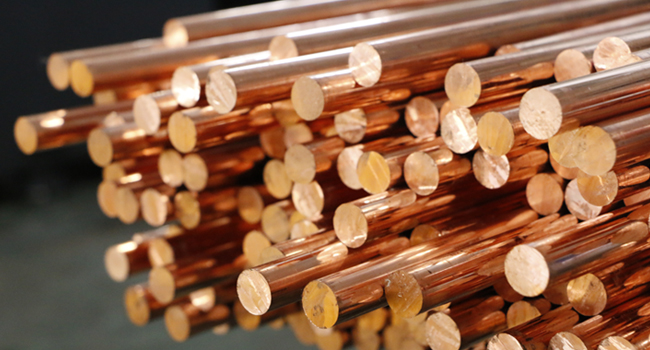
What are the Copper Series Materials?
Copper alloys encompass a wide range of materials with varying properties and applications. Here are some common series and types of copper alloys:
Copper-Nickel Alloys (C7XXX Series): These alloys are known for their excellent resistance to seawater corrosion and biofouling. Common alloys in this series include C70600 (90-10 copper-nickel) and C71500 (70-30 copper-nickel).
Bronze Alloys (C5XXX Series): Bronze alloys are known for their strength, wear resistance, and corrosion resistance. Examples include C51000 (Phosphor Bronze), C61400 (Aluminum Bronze), and C93200 (Bearing Bronze).
Brass Alloys (C2XXX Series): Brass alloys are prized for their malleability, corrosion resistance, and ease of machining. Common brass alloys include C26000 (Cartridge Brass), C36000 (Free-Cutting Brass), and C46400 (Naval Brass).
Copper-Chromium Alloys (C1XXX Series): These alloys are known for their excellent high-temperature strength and electrical conductivity. C18200 (Chromium Copper) is a notable example.
Copper-Beryllium Alloys (C1XXX Series): Copper-beryllium alloys are highly conductive and exhibit excellent mechanical properties. C17200 (Beryllium Copper) is one such alloy used in electrical and electronic applications.
Copper-Tin Alloys (C9XXX Series): These alloys are often used for their high strength and wear resistance. An example is C90200 (Tin Bronze).
Phosphor Bronze Alloys: These alloys, typically within the C5XXX series, contain phosphorus for improved wear resistance. C51000 and C54400 are examples.
Leaded Bronze Alloys: These alloys have small amounts of lead added for improved machinability. C93200 (Bearing Bronze) is a common leaded bronze alloy.
Copper-Zinc Alloys (C2XXX Series): These alloys, commonly referred to as brass, vary in composition for different applications. C26000, C36000, and C46400 are examples.
These are just a few examples of the many copper alloys available, each tailored to specific applications based on their unique properties and characteristics.
Copper Series Materials Advantages
Under each copper alloy series, there are commonly used materials, each with its own set of advantages. Here are some examples of copper materials within different series and their key advantages:
Copper-Nickel Alloys (C7XXX Series):
C70600 (90-10 Copper-Nickel): Known for excellent corrosion resistance in seawater and marine environments.
C71500 (70-30 Copper-Nickel): Offers a good balance between strength and corrosion resistance.
Bronze Alloys (C5XXX Series):
C51000 (Phosphor Bronze): Known for its exceptional wear resistance and electrical conductivity.
C61400 (Aluminum Bronze): Offers high strength, corrosion resistance, and resistance to wear and fatigue.
C93200 (Bearing Bronze): Provides excellent bearing properties and wear resistance.
Brass Alloys (C2XXX Series):
C26000 (Cartridge Brass): Recognized for its good combination of strength, corrosion resistance, and formability.
C36000 (Free-Cutting Brass): Offers excellent machinability and can be easily shaped and formed.
C46400 (Naval Brass): Known for its resistance to corrosion in marine environments.
Copper-Chromium Alloys (C1XXX Series):
C18200 (Chromium Copper): Offers high electrical conductivity and excellent high-temperature strength.
Copper-Beryllium Alloys (C1XXX Series):
C17200 (Beryllium Copper): Provides high electrical and thermal conductivity, as well as excellent spring properties.
Copper-Tin Alloys (C9XXX Series):
C90200 (Tin Bronze): Known for its high strength, wear resistance, and corrosion resistance.
Phosphor Bronze Alloys (C5XXX Series):
C51000: Offers excellent wear resistance, low friction, and good electrical conductivity.
C54400: Provides increased strength and resistance to wear and corrosion.
Leaded Bronze Alloys: Lead is added to improve machinability.
C93200 (Bearing Bronze): Recognized for its excellent bearing properties.
Copper-Zinc Alloys (C2XXX Series):
C26000: Offers good formability and corrosion resistance.
C36000: Known for its outstanding machinability.
These materials are chosen based on their unique properties, such as electrical conductivity, corrosion resistance, wear resistance, and machinability, to suit specific applications across various industries. The selection depends on the desired performance characteristics needed for a particular application.
Copper Alloy Materail Forms
Copper alloys are available in various forms to suit different manufacturing and application requirements. Some common forms of copper alloys include:
Copper Sheets and Plates: These are flat sheets or plates of copper alloys and are often used for architectural, electrical, and industrial applications.
Copper Rods and Bars: Copper rods and bars are solid cylindrical forms of copper alloys. They are commonly used in electrical and engineering applications.
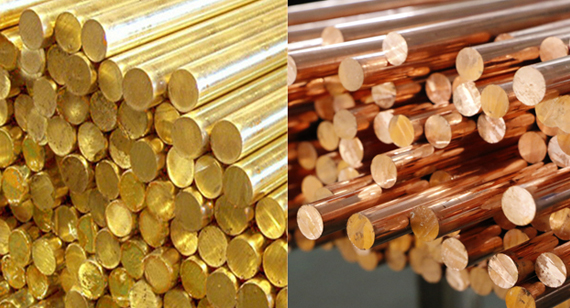
Copper Tubes and Pipes: Copper tubes and pipes come in various sizes and shapes and are used for plumbing, HVAC, and refrigeration systems.
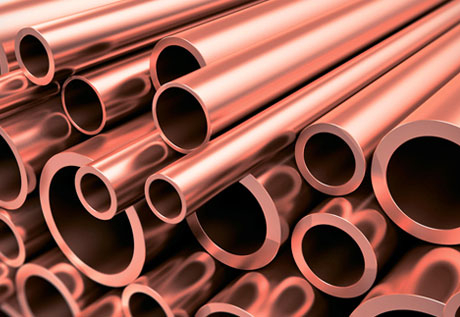
Copper Wire: Copper wire is widely used for electrical wiring, conductors, and in various electronic components.
Copper Alloys in Ingot Form: Copper alloys can be produced in ingot form, which is then used as a raw material for further processing and manufacturing.
Copper Alloys as Castings: Copper alloys can be cast into various shapes and sizes, making them suitable for intricate and custom parts.
Copper Alloys as Extrusions: Extruded copper alloys are used to create complex shapes and profiles for a wide range of applications.
Copper Alloys in Powder Form: Copper alloy powders are used in powder metallurgy processes to produce components with unique properties.
Copper Alloys as Foils: Copper alloy foils are thin sheets used in applications requiring flexibility, such as electrical connectors and shielding.
Copper Alloys as Forgings: Forged copper alloys are used in applications requiring high strength and durability.
These various forms of copper alloys cater to the diverse needs of industries such as electrical, automotive, aerospace, construction, and more. The choice of form depends on the specific requirements of the application and the manufacturing process.
Copper Alloy Metal Forming process
Copper alloys, like many other metals, can be formed and shaped through various metalworking processes to create a wide range of components and products. Some common metal forming processes for copper alloys include:
Casting: Copper alloys can be melted and poured into molds to create complex shapes. This process is commonly used for producing decorative items, plumbing fixtures, and sculptures.
Extrusion: In extrusion, a copper alloy is forced through a die to create a desired shape. It's often used for producing profiles, pipes, and tubes with consistent cross-sections.
Forging: Forging involves heating a copper alloy and shaping it using compressive force. It's used to manufacture high-strength and durable components like automotive parts and industrial tools.
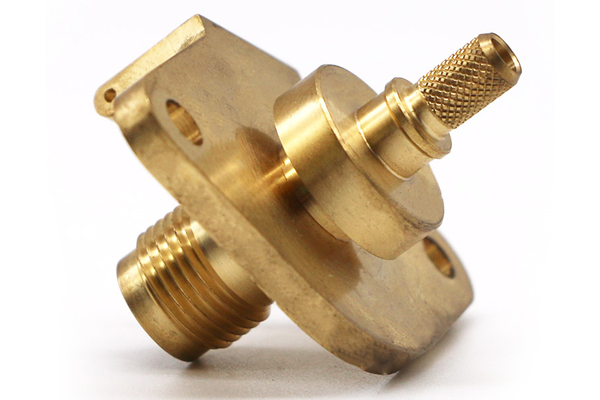
Rolling: Copper alloys can be rolled into sheets, strips, and foils. This process is essential for producing materials used in electrical wiring, roofing, and various industrial applications.
Drawing: Drawing is used to reduce the diameter of copper wire or tubing. It's a crucial process in the production of fine wires used in electrical applications.
Stamping: Stamping involves cutting or forming copper alloy sheets using a die and a press. It's used for making intricate parts like electrical connectors and decorative trim.
CNC Machining: Copper alloys can be machined using techniques like turning, milling, and drilling. This is common in precision engineering and manufacturing.
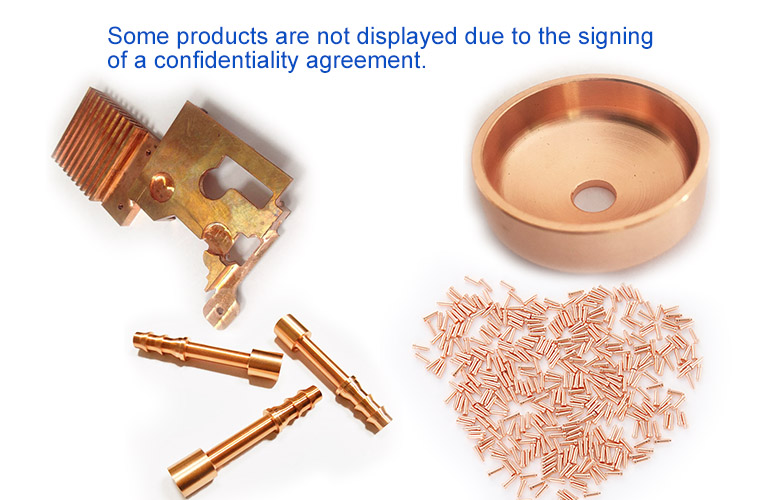
Powder Metallurgy: Copper alloy powders are compacted and sintered to create intricate components with unique properties. This is used in applications like bearings and electrical contacts.
Spinning: Spinning is a process where a copper alloy disc is rotated while a tool shapes it into a seamless hollow shape. It's often used for producing items like brass musical instruments.
Deep Drawing: Deep drawing is a specialized form of stamping used to create deep, cylindrical or box-like shapes from copper alloy sheets. It's common in cookware and automotive parts manufacturing.
These metal forming processes can be combined or customized to meet specific design and manufacturing requirements. The choice of the appropriate process depends on factors like the desired shape, mechanical properties, and production volume.
What are the Characteristics of Copper Alloy Series Materials? Feature Comparison
Copper alloys come in a wide range of grades or material designations, each with its unique characteristics and properties. Here are some common copper alloy material designations along with their key characteristics and a brief comparison:
Copper Alloy C10100 (Oxygen-Free Electronic Copper):
Characteristics: High electrical and thermal conductivity, excellent corrosion resistance, and good formability.
Common Applications: Electrical connectors, electrical conductors, printed circuit boards.
Copper Alloy C11000 (Electrolytic Tough Pitch Copper):
Characteristics: Good electrical and thermal conductivity, excellent corrosion resistance, and ease of soldering and brazing.
Common Applications: Electrical wiring, plumbing, architectural elements.
Copper Alloy C26000 (Cartridge Brass):
Characteristics: High tensile strength, excellent machinability, and good corrosion resistance.
Common Applications: Ammunition casings, plumbing components, musical instruments.
Copper Alloy C28000 (Muntz Metal):
Characteristics: High corrosion resistance in marine environments, good machinability, and weldability.
Common Applications: Shipbuilding, marine hardware, architectural applications.
Copper Alloy C36000 (Free-Cutting Brass):
Characteristics: Excellent machinability, good corrosion resistance, and suitable for cold forming.
Common Applications: Screws, fittings, valves, and various small components.
Copper Alloy C70600 (Copper-Nickel 90/10):
Characteristics: High resistance to seawater corrosion, good weldability, and excellent ductility.
Common Applications: Shipbuilding, heat exchangers, condensers.
Copper Alloy C71500 (Copper-Nickel 70/30):
Characteristics: High resistance to seawater corrosion, good weldability, and high strength.
Common Applications: Offshore oil and gas platforms, seawater piping systems.
Copper Alloy C93200 (Bearing Bronze):
Characteristics: High load-carrying capacity, good wear resistance, and suitable for lubricated applications.
Common Applications: Bearings, bushings, machine components.
Copper Alloy C99700 (Silicon Bronze):
Characteristics: High strength and corrosion resistance, good formability, and excellent weldability.
Common Applications: Sculptures, architectural elements, fasteners.
Comparison:
Oxygen-free electronic copper (C10100) and electrolytic tough pitch copper (C11000) are excellent conductors with high corrosion resistance, but C10100 has slightly higher conductivity.
Brass alloys like C26000 and C28000 offer good strength and corrosion resistance, with C26000 being more widely used due to its higher zinc content.
Free-cutting brass (C36000) is chosen for its outstanding machinability.
Copper-nickel alloys (C70600 and C71500) excel in marine applications due to their resistance to seawater corrosion.
Bearing bronze (C93200) is specifically designed for load-bearing applications with good wear resistance.
Silicon bronze (C99700) combines strength and corrosion resistance, making it suitable for artistic and architectural uses.
The choice of copper alloy depends on the specific requirements of an application, including conductivity, corrosion resistance, strength, and machinability.
Certainly, here's a comparison of different copper alloy series materials based on various properties and applications:
Copper Alloy Series Materials:
Brass (Cu-Zn):
Formability: Excellent formability, making it suitable for intricate designs.
Machinability: Good machinability, allowing for precise machining.
Weldability: Generally weldable, but may require proper techniques.
Corrosion Resistance: Resistant to corrosion, especially in dry environments.
Heat Treatment: Not typically heat-treated.
Weight: Moderate density.
Conductivity: Good electrical conductivity.
Thermal Conductivity: Moderate thermal conductivity.
Applications: Commonly used in plumbing fittings, musical instruments, and decorative items.
Bronze (Cu-Sn):
Formability: Moderate formability, suitable for various applications.
Machinability: Good machinability for precise finishing.
Weldability: Weldable with proper techniques.
Corrosion Resistance: Excellent corrosion resistance, ideal for marine applications.
Heat Treatment: Generally not heat-treated.
Weight: Moderate density.
Conductivity: Good electrical conductivity.
Thermal Conductivity: Moderate thermal conductivity.
Applications: Used in bearings, bushings, sculptures, and marine hardware.
Copper-Nickel Alloys (Cu-Ni):
Formability: Good formability.
Machinability: Moderate machinability.
Weldability: Weldable with suitable methods.
Corrosion Resistance: Excellent corrosion resistance, especially in seawater.
Heat Treatment: Not typically heat-treated.
Weight: Moderate density.
Conductivity: Good electrical conductivity.
Thermal Conductivity: High thermal conductivity.
Applications: Commonly used in marine applications, heat exchangers, and electrical connectors.
Beryllium Copper (Cu-Be):
Formability: Moderate formability.
Machinability: Excellent machinability.
Weldability: Weldable but requires special precautions.
Corrosion Resistance: Good corrosion resistance.
Heat Treatment: Responds well to heat treatment for improved properties.
Weight: Moderate density.
Conductivity: Excellent electrical conductivity.
Thermal Conductivity: High thermal conductivity.
Applications: Used in aerospace, electrical connectors, and precision instruments.
Copper-Tin Alloys (Cu-Sn):
Formability: Moderate formability.
Machinability: Good machinability.
Weldability: Weldable with proper techniques.
Corrosion Resistance: Excellent corrosion resistance.
Heat Treatment: Generally not heat-treated.
Weight: Moderate density.
Conductivity: Good electrical conductivity.
Thermal Conductivity: Moderate thermal conductivity.
Applications: Commonly used in bearings, gears, and musical instruments.
Copper-Aluminum Alloys (Cu-Al):
Formability: Good formability.
Machinability: Moderate machinability.
Weldability: Limited weldability.
Corrosion Resistance: Moderate corrosion resistance.
Heat Treatment: Responds well to heat treatment.
Weight: Lower density.
Conductivity: Good electrical conductivity.
Thermal Conductivity: High thermal conductivity.
Applications: Used in electrical conductors, heat sinks, and automotive parts.
These comparisons provide a general overview of copper alloy series materials, but the specific properties and suitability for applications may vary depending on the alloy composition and processing methods.
Quick Reference Chart – Choosing an Copper Grade
| Formability | CNC Machining | Weldability | Corrosion Resistance | Heat Treating | Weight | Conductivity | Thermal Conductivity | Applications | ||||||||||
| Copper Alloy C10100 | Good | Good | Excellent | Excellent | Annealing | Moderate | Very high | Very high | Electrical connectors, PCBs, high-conductivity applications | |||||||||
| Copper Alloy C11000 | Excellent | Good | Excellent | Excellent | Annealing | Moderate | Very high | Very high | Electrical wiring, plumbing, architectural elements | |||||||||
| Copper Alloy C26000 | Good | Excellent | Fair | Good | Annealing | Moderate | High | High | Ammunition casings, plumbing components, musical instruments | |||||||||
| Copper Alloy C28000 | Good | Good | Excellent | High | Annealing | Moderate | High | High | Shipbuilding, marine hardware, architectural applications | |||||||||
| Copper Alloy C36000 | Good | Excellent | Poor | Good | Annealing | Moderate | High | High | Screws, fittings, valves, small components | |||||||||
| Copper Alloy C70600 | Good | Fair | Good | Excellent | Annealing | Moderate | Moderate | Moderate | Shipbuilding, heat exchangers, condensers | |||||||||
| Copper Alloy C71500 | Good | Fair | Good | Excellent | Annealing | Moderate | Moderate | Moderate | Offshore oil and gas platforms, seawater piping systems |
Copper Alloy Series Materials Application
Copper alloy materials find a wide range of applications across various industries due to their unique combination of properties. Here are some common applications for different copper alloy series:
1. Copper Alloy Series 100 (C100):
Applications: Electrical connectors, conductive components, printed circuit boards (PCBs), electrical conductors, electronic devices.
2. Copper Alloy Series 200 (C200):
Applications: Roofing, flashing, gutters, architectural elements, decorative trim, heat exchanger tubes, power generation.
3. Copper Alloy Series 300 (C300):
Applications: Marine hardware, condenser tubes, heat exchangers, desalination plants, seawater piping, shipbuilding.
4. Copper Alloy Series 400 (C400):
Applications: Musical instruments (brass instruments), ammunition casings, decorative fittings, plumbing components.
5. Copper Alloy Series 500 (C500):
Applications: Valves, fittings, screws, fasteners, small precision components, decorative hardware.
6. Copper Alloy Series 600 (C600):
Applications: Electrical connectors, electrical switches, electronic components, contact springs, relay components.
7. Copper Alloy Series 700 (C700):
Applications: Offshore oil and gas platforms, chemical process equipment, seawater piping systems, heat exchangers.
These are general applications, and the specific copper alloy chosen depends on factors such as the alloy's properties (corrosion resistance, conductivity, machinability), environmental conditions, regulatory requirements, and the intended function of the component. Copper alloys are valued for their versatility and can be found in everything from electronics to heavy industry.
Copper Alloy Series Materials Common Problems
Certainly, here are some common questions and answers related to copper alloy materials:
1. What are copper alloys?
Copper alloys are materials made by combining copper with one or more other elements to enhance its properties, such as strength, corrosion resistance, or electrical conductivity.
2. Are copper alloys corrosion-resistant?
Many copper alloys, such as brass and bronze, exhibit excellent corrosion resistance, making them suitable for marine, architectural, and industrial applications.
3. What is the difference between brass and bronze?
Brass is primarily composed of copper and zinc, while bronze is primarily composed of copper and tin. Bronze is typically harder and more corrosion-resistant than brass.
4. Can copper alloys be used in electrical applications?
Yes, copper and its alloys are excellent conductors of electricity. They are commonly used in electrical wiring, connectors, and components.
5. Do copper alloys tarnish or patina over time?
Copper alloys like brass and bronze can develop a natural patina or tarnish when exposed to air and moisture. Some people value this aged appearance, while others prefer to maintain a polished look.
6. Are copper alloys suitable for high-temperature applications?
Certain copper alloys, like beryllium copper, can withstand high temperatures and are used in aerospace and electrical applications where heat resistance is required.
7. Can copper alloys be recycled?
Yes, copper alloys are highly recyclable. Recycling these materials is cost-effective and helps conserve natural resources.
8. What are the environmental benefits of using copper alloys?
Copper alloys are sustainable materials with a low environmental impact. They have a long lifespan, are easily recycled, and contribute to energy efficiency in various applications.
9. Are there any health concerns associated with copper alloys?
Copper and its alloys have antimicrobial properties and are used in healthcare settings to reduce the spread of bacteria and viruses.
10. Can copper alloys be machined and fabricated easily?
- Copper alloys generally have good machinability and are easily fabricated through processes like cutting, welding, and forming.
These answers provide a basic overview of common questions related to copper alloys. The specific properties and applications of copper alloys can vary depending on the alloy composition and intended use.
